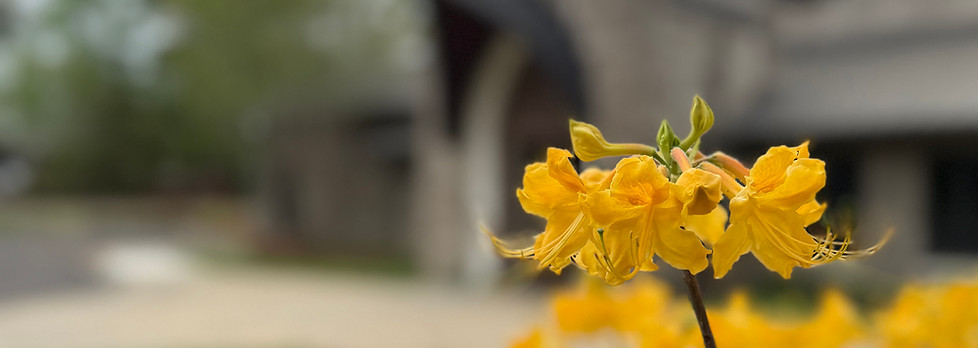Our Story

school met in the homes of church members while waiting for a proper church building. With world conditions increasingly tense, financing a new building was an uncertain proposition. The members decided to raise enough money to contract with the builder and borrow $4,200 from the American Church Building Fund to build a parish hall that would double as a nave until a permanent nave could be built. Members began worshiping in the “shingle church” on Claiborne Avenue in 1942, with 100 communicants and 50 baptized members. In seven short years, the St. Columb’s mission had achieved parish status. In 1960, the building the congregation had hoped for in 1941 was complete.
During the years on Claiborne Avenue, St. Columb’s developed as a neighborhood church. Always a “service” church, the guilds were active in outreach, making bandages for cancer patients and hosting an annual Christmas party for female patients at Whitfield, the local hospital for treatment of the mentally ill. The men began a rich tradition of their own, the annual Oyster Supper. This event was the major fundraiser for the Men’s Club and ran for 50 years.
In 1968 St. Columb’s welcomed a newly formed school for children with learning disabilities. Heritage School became the first accredited school for these children in the state. The school used our facilities without charge and was the answer to prayer for many parents. Heritage School operated continuously until 2006 when it was decided that the public schools were doing a good job of educating these children and the ministry was no longer needed. The school was housed at St. Columb’s for all but two years during which we were transitioning from one location to another.

In 1986 after Bishop Gray challenged the Episcopal churches in Mississippi to feed the hungry, a ministry began which became known as Iona House (Isle of Outreach for Neighborhood Assistance). At first the ministry operated out of the trunks of parishioners’ cars, and groceries were delivered to people in need. After the purchase of a small house located next door to the Claiborne Avenue church, Iona House had a permanent home. From then until today, we have fed literally thousands of hungry people out of that location. The ministry is still going strong with all donated funds going to purchase groceries and upkeep of the house, and all labor supplied by volunteers.
St. Columb’s stayed on Claiborne Avenue in west Jackson until 1994. By that time, many of the members of St. Columb’s had moved from their original neighborhood in west Jackson. The church membership had suffered a serious decline and visitors were few and far between. As such, the congregation decided to buy a nine-acre parcel of land in Ridgeland and met in the St. Andrew’s upper school cafeteria until a parish hall and temporary nave could be constructed on the Ridgeland site. Following the example of their forbearers, the first building on Sunnybrook Road, completed in 1998, doubled as a parish hall and nave until 2009, when the current nave was completed.
Today, St. Columb’s continues in its numerous ministries and in its growth. The overwhelming response from those who are asked why they keep coming to St. Columb’s is, “It’s the people.”

A group of women (members of a guild) at St. Andrew’s in Jackson saw the need for a church in the fast-growing neighborhood of west Jackson. In 1941, nine women and three men, all communicants of St. Andrew’s, made formal application to Bishop William Mercer Green to form a mission church. Within weeks, the bishop named a mission committee and the congregation of 30 held Sunday services at 5 p.m. in the Trinity Lutheran Church on the corner of Rose Street and Grand Avenue.
Both laity and clergy alike agreed that Sunday school was of paramount importance, so without waiting for proper classrooms, the membership got busy and made do. Sunday





